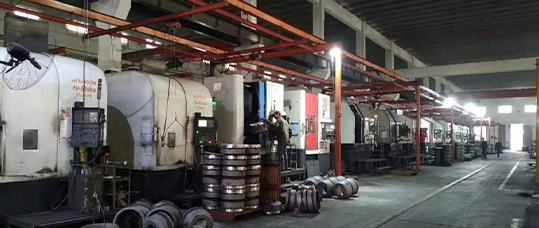
-
 Afrikaans
Afrikaans -
 Albanian
Albanian -
 Amharic
Amharic -
 Arabic
Arabic -
 Armenian
Armenian -
 Azerbaijani
Azerbaijani -
 Basque
Basque -
 Belarusian
Belarusian -
 Bengali
Bengali -
 Bosnian
Bosnian -
 Bulgarian
Bulgarian -
 Catalan
Catalan -
 Cebuano
Cebuano -
 Corsican
Corsican -
 Croatian
Croatian -
 Czech
Czech -
 Danish
Danish -
 Dutch
Dutch -
 English
English -
 Esperanto
Esperanto -
 Estonian
Estonian -
 Finnish
Finnish -
 French
French -
 Frisian
Frisian -
 Galician
Galician -
 Georgian
Georgian -
 German
German -
 Greek
Greek -
 Gujarati
Gujarati -
 Haitian Creole
Haitian Creole -
 hausa
hausa -
 hawaiian
hawaiian -
 Hebrew
Hebrew -
 Hindi
Hindi -
 Miao
Miao -
 Hungarian
Hungarian -
 Icelandic
Icelandic -
 igbo
igbo -
 Indonesian
Indonesian -
 irish
irish -
 Italian
Italian -
 Japanese
Japanese -
 Javanese
Javanese -
 Kannada
Kannada -
 kazakh
kazakh -
 Khmer
Khmer -
 Rwandese
Rwandese -
 Korean
Korean -
 Kurdish
Kurdish -
 Kyrgyz
Kyrgyz -
 Lao
Lao -
 Latin
Latin -
 Latvian
Latvian -
 Lithuanian
Lithuanian -
 Luxembourgish
Luxembourgish -
 Macedonian
Macedonian -
 Malgashi
Malgashi -
 Malay
Malay -
 Malayalam
Malayalam -
 Maltese
Maltese -
 Maori
Maori -
 Marathi
Marathi -
 Mongolian
Mongolian -
 Myanmar
Myanmar -
 Nepali
Nepali -
 Norwegian
Norwegian -
 Norwegian
Norwegian -
 Occitan
Occitan -
 Pashto
Pashto -
 Persian
Persian -
 Polish
Polish -
 Portuguese
Portuguese -
 Punjabi
Punjabi -
 Romanian
Romanian -
 Russian
Russian -
 Samoan
Samoan -
 Scottish Gaelic
Scottish Gaelic -
 Serbian
Serbian -
 Sesotho
Sesotho -
 Shona
Shona -
 Sindhi
Sindhi -
 Sinhala
Sinhala -
 Slovak
Slovak -
 Slovenian
Slovenian -
 Somali
Somali -
 Spanish
Spanish -
 Sundanese
Sundanese -
 Swahili
Swahili -
 Swedish
Swedish -
 Tagalog
Tagalog -
 Tajik
Tajik -
 Tamil
Tamil -
 Tatar
Tatar -
 Telugu
Telugu -
 Thai
Thai -
 Turkish
Turkish -
 Turkmen
Turkmen -
 Ukrainian
Ukrainian -
 Urdu
Urdu -
 Uighur
Uighur -
 Uzbek
Uzbek -
 Vietnamese
Vietnamese -
 Welsh
Welsh -
 Bantu
Bantu -
 Yiddish
Yiddish -
 Yoruba
Yoruba -
 Zulu
Zulu
shoe drum brake
The shoe drum brake is a vital component in the braking system of many vehicles, particularly those designed for heavier loads, such as trucks and buses. Its design incorporates a series of key elements that ensure reliable performance and effective stopping power.
At its core, the shoe drum brake consists of a drum, which is a cylindrical component that rotates with the wheel, and brake shoes, which are curved pieces of material that press against the inner surface of the drum when braking is initiated. When a driver engages the brake pedal, hydraulic force is transmitted to the brake shoes, causing them to expand and press against the drum’s interior surface. This action generates friction, which slows down the rotation of the wheel and ultimately brings the vehicle to a halt.
One of the significant advantages of shoe drum brakes is their ability to generate a substantial amount of friction, which is particularly advantageous for larger vehicles that require extra stopping power. The design allows for a larger contact area between the shoe and drum, enhancing the brake's performance even under heavy loads. Additionally, shoe drum brakes tend to be more durable and have a longer lifespan compared to disc brakes, particularly in applications where vehicles may be subject to extreme heat or heavy usage.
shoe drum brake

However, shoe drum brakes also come with drawbacks. One of the main issues is heat dissipation. During prolonged or intense braking, the friction generated can lead to increased temperatures, which may cause brake fade—a temporary loss of braking efficiency. To combat this, manufacturers often incorporate vented designs or cooling fins in the drums to help dissipate heat more effectively.
Maintenance of shoe drum brakes is essential for ensuring optimal performance. Regular inspections can help detect wear on the brake shoes and drum. When the friction material on the shoes wears down, it should be replaced to maintain effective braking. Additionally, the drum's interior surface should be checked for grooves or deformities that can affect the contact with the shoes.
In summary, the shoe drum brake remains a reliable and efficient braking option for various vehicles, particularly those that require substantial stopping power. While advancements in braking technology have introduced alternative systems, the shoe drum brake's combination of durability and effectiveness continues to make it a viable choice in the automotive world. Ongoing innovation and maintenance practices will ensure that this traditional braking system remains relevant in a rapidly evolving industry.
-
What Are Drum BrakesNewsJul.07,2025
-
Understanding Brake Drum MaterialNewsJul.07,2025
-
Semi-Trailer Brake Drum: A Key Component for Extreme Loads and Long-Distance TransportNewsJul.07,2025
-
Drum Brake Pads for SaleNewsJul.07,2025
-
Brake Drums for SaleNewsJul.07,2025
-
Brake Drum ManufacturerNewsJul.07,2025
-
Aluminum Brake Drums: The Future of High-Performance CarsNewsJul.07,2025
